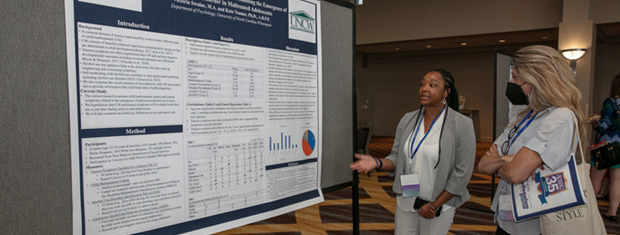




The APSAC Advisor is a peer reviewed quarterly news journal for professionals in the field of child abuse and neglect.
The APSAC Advisor provides succinct, data-based, practice-oriented articles that keep interdisciplinary professionals
informed of the latest developments in policy and practice the field of child maltreatment. It is designed to highlight
best practices in the field and publish original articles and current information about child maltreatment for professionals
from a variety of backgrounds including medicine, law, law enforcement, social work, child protective services, psychology,
public health and prevention in the U.S.
 If you wish to learn more about submitting an article to the Advisor, please click here.
If you wish to learn more about submitting an article to the Advisor, please click here.
This library contains Advisor issues dating back to the first issue in 1988. The most recent issue appears at the top.
Scroll down to select past issues by year and issue number. Once a publication appears in the box, you
can use the Enlarge button to open the document in a new window or tab (depending on how your browser is set up).
This will allow you to view the document with larger print.
To print a document, first use the Enlarge button to open the document in a new window or tab. Then use your browser's Print command.
To return here from a new tab, close the tab. To return from a new window, click your browser's Back button.
In the listing below, click on a year and issue number to see the articles in that publication.
2012 Number 3
Advanced Practice Nurse Barriers to Reporting Child Maltreatment
The authors present the results of a survey of child maltreatment reporting by advanced practice nurses. They note that a significant percentage of respondents choose not to report their suspicions even though mandated to report by state law, and they identify several potential barriers to reporting, such as lack of education and training about child maltreatment, negative perceptions of child protective services, and lack of physical evidence indicating child maltreatment occurred. They conclude that identifying reporting barriers is essential for implementing effective interventions to improve reporting among advanced practice nurses.
Child maltreatment in the United States remains a serious threat affecting millions of children and families each year. According to Child Maltreatment 2010, a report published by the U.S. Department of Health and Human Services (HHS), Child Protective Service (CPS) agencies received over 3.3 million referrals, involving the alleged maltreatment of about 5.9 million children across the United States. Over 25% of the cases reported were those of physical or sexual abuse (HHS, 2011).
Epidemiology of Clergy Sexual Abuse in the U.S. Catholic Church
The authors review the results of a large-scale study undertaken by the John Jay College of Criminal Justice that considers quantitative aspects of sexual abuse by clergy in the Roman Catholic Church. Entitled the Nature and Scope study, it holds information - gathered from existing files in all Catholic dioceses, eparchies, and religious communities - about every allegation of sexual abuse of a minor by priests and deacons in the United States from 1950 to 2002. The study concludes that, from a public health perspective, sexual abuse by clergy began declining in the 1980s but remains a subset of the much larger problem of child sexual abuse, which itself is part of the even larger public health issues of child maltreatment and interpersonal violence.
The purpose of Journal Highlights is to alert readers to current literature on child abuse. Selected articles from journals representing the variety of disciplines reflected in APSAC's membership are presented in the form of an annotated bibliography.
APSAC Advisor 24(3): Full Issue